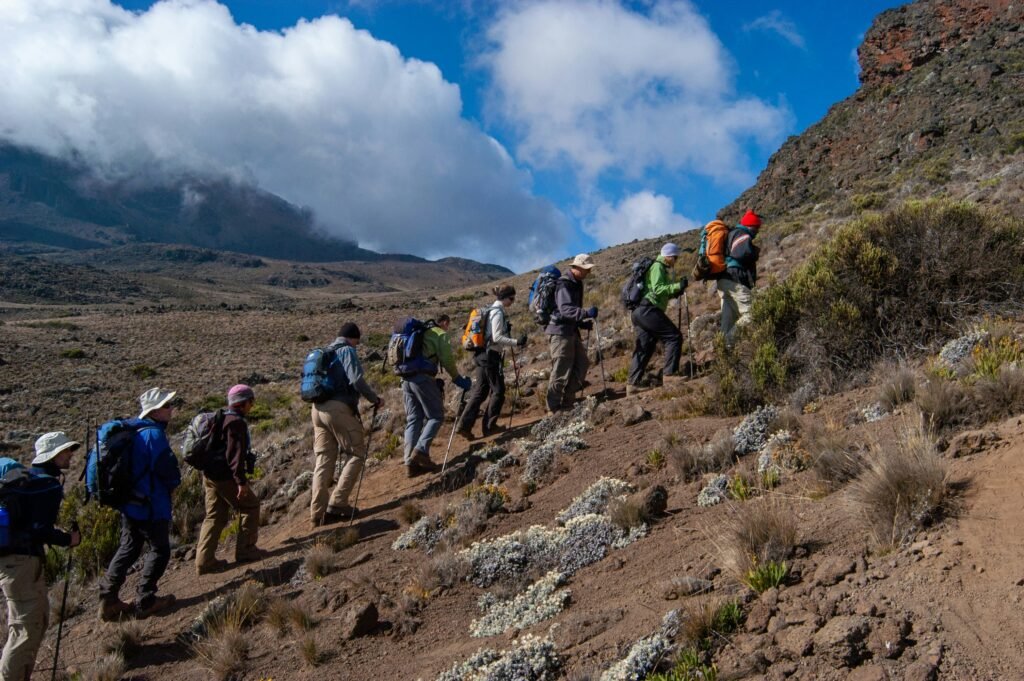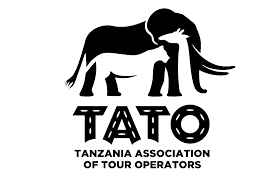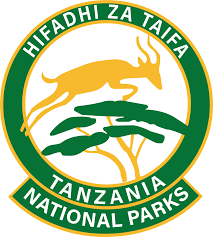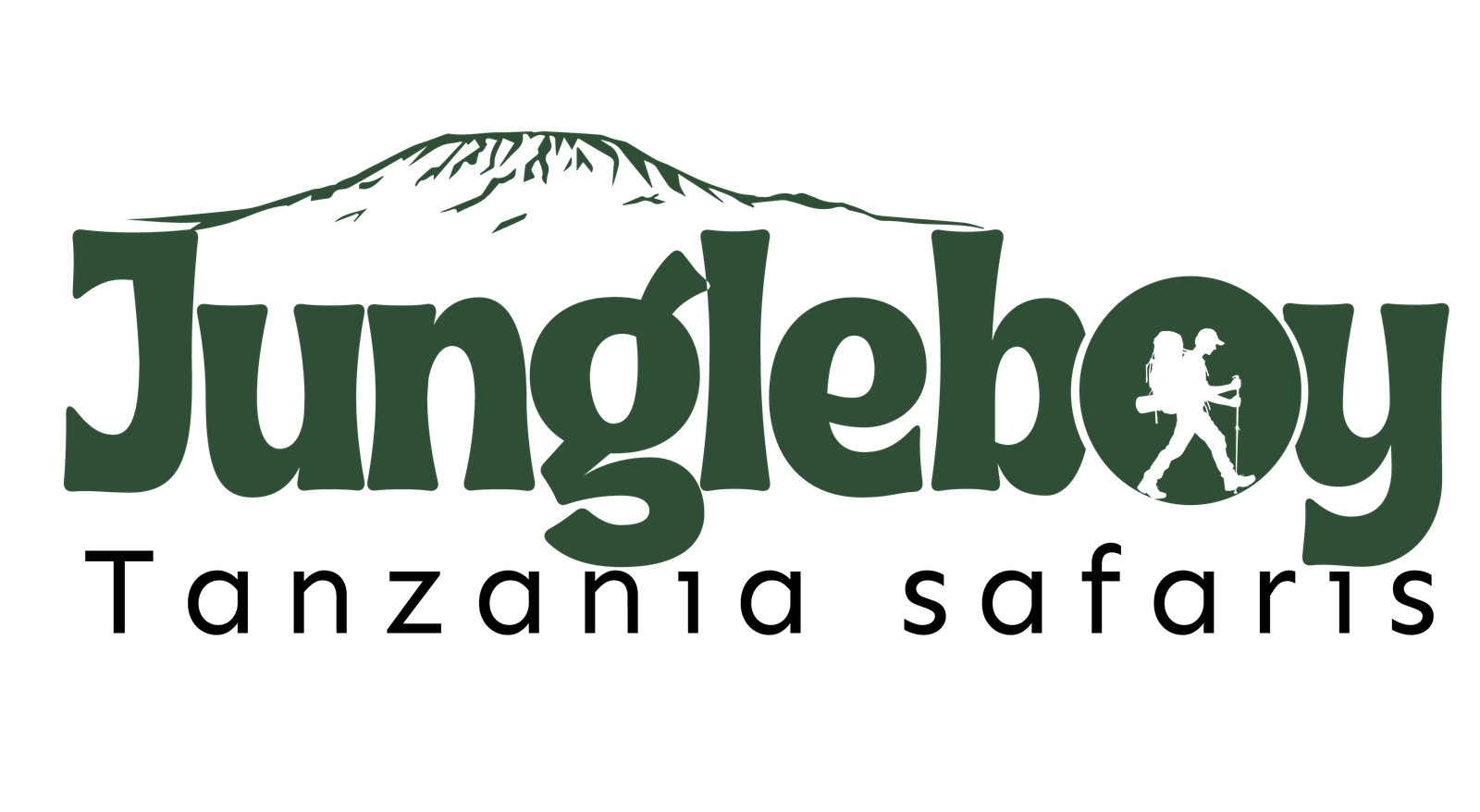Climbing Mount Kilimanjaro requires specific gear to ensure safety, comfort, and success on the mountain. Key clothing includes layered systems, starting with moisture-wicking base layers, insulating mid-layers, and weather-resistant outer layers. A down or insulated jacket is essential for the cold summit nights. Footwear should consist of broken-in, waterproof hiking boots paired with thick, thermal socks to protect against the cold and prevent blisters. Accessories like a warm hat, balaclava, gloves, and a wide-brimmed hat or cap provide protection from both the cold and the sun.
Equipment essentials include a durable backpack (30-40 liters) with a rain cover, a sleeping bag rated for extreme cold, trekking poles for stability, and a headlamp with extra batteries for early morning summit attempts. Hydration systems, such as a camelback or water bottles, are vital, along with water purification tablets. Don’t forget sun protection, including sunglasses, high-SPF sunscreen, and lip balm. Pack energy-rich snacks, personal medications, and a first aid kit for emergencies.
IMPORTANCE OF HAVING KILIMANJARO PACKING LIST TO THE TRAVELER
Having a comprehensive Kilimanjaro packing list is vital for a traveler as it ensures a safe, comfortable, and successful trek to the summit. This list helps climbers prepare for the mountain’s unpredictable weather conditions, from scorching sun to freezing temperatures. It minimizes the risk of overlooking essential gear like insulated clothing, proper footwear, or hydration systems, which are crucial for physical endurance and health at high altitudes. A well-prepared packing list enhances efficiency by organizing items to avoid overpacking or carrying unnecessary weight. Additionally, it serves as a guide for acquiring specialized equipment, ensuring the traveler has the tools needed to tackle the unique challenges of the climb. Overall, the packing list is a roadmap for a seamless and enjoyable Kilimanjaro adventure, boosting confidence and increasing the chances of reaching the summit.

THE FOLLOWING A THE MOST KILIMANJARO HIKING EQUIPMENT:
Clothes for Kilimanjaro Climbing
Climbing Mount Kilimanjaro requires careful selection of clothing to adapt to the mountain’s four distinct climate zones: rainforest, moorland, alpine meadows, and Arctic desert. Each zone presents unique weather conditions, demanding versatile and layered clothing for optimal comfort and protection. Essential items include moisture-wicking base layers to keep sweat away, thermal mid-layers for warmth, and waterproof, windproof jackets and trousers to shield against rain, wind, and freezing temperatures. A high-quality insulated jacket is crucial for the cold summit push.
Hiking trousers should be lightweight and breathable, with zip-off options for temperature adjustments, while thermal underwear adds an extra layer of warmth in the colder zones. Comfortable, quick-drying T-shirts are ideal for lower altitudes, and fleece pullovers provide added insulation. Accessories like a warm hat, gloves, and a neck gaiter are necessary for higher altitudes, while a sun hat, sunglasses, and breathable layers are essential for sun protection in the lower zones. These carefully chosen clothes ensure that climbers remain comfortable and protected throughout their Kilimanjaro adventure.
Bags and Backpacks for Hiking
When climbing Mount Kilimanjaro, having the right bags is essential for organizing and carrying your belongings effectively. Two types of bags are recommended: a daypack and a duffle bag.
The daypack, carried by the hiker, should be lightweight yet sturdy, with a capacity of 20-30 liters to hold essentials such as water bottles or hydration systems, snacks, sunscreen, sunglasses, a rain jacket, and a first aid kit. Look for a pack with adjustable straps, padded support, and a rain cover for comfort and protection against unpredictable weather.
The duffle bag, typically handled by porters, should be durable and weather-resistant to protect your gear from rain, dust, and rough handling. It should have a capacity of 50-90 liters, depending on your packing needs, and accommodate items like clothing, sleeping bags, and toiletries. Ensure the bag is easy to carry and can withstand the rigors of the trek. High-quality bags not only keep your belongings safe but also enhance your overall hiking experience on Kilimanjaro.
Footwear for Kilimanjaro Climbing
Footwear is a critical part of your Kilimanjaro packing list, directly impacting your comfort and safety during the climb. Selecting the right hiking boots is essential, as they provide support, stability, and protection on the varied terrain of the mountain. Look for waterproof, high-ankle hiking boots with a sturdy sole to handle rocky paths, mud, and slippery surfaces. Ensure they are well-fitted to prevent blisters and allow for proper circulation in cold conditions.
For additional comfort, bring thermal socks for warmth at higher altitudes and moisture-wicking socks to keep your feet dry in the humid rainforest zone. Sneakers or lightweight trail shoes can be useful for wearing around camp or during less demanding sections of the hike. Breaking in your footwear before the climb is vital to avoid discomfort and injury. Proper footwear ensures a smoother journey, allowing you to focus on the breathtaking experience of summitting Kilimanjaro.
Headgear for Kilimanjaro Climbing
Selecting proper headgear is essential for protecting yourself from the diverse weather conditions encountered on Mount Kilimanjaro. A wide-brimmed sunhat or cap is crucial for the lower altitudes to shield against the intense sun, while sunglasses with UV protection safeguard your eyes from glare and harmful rays. A lightweight balaclava or neck warmer provides warmth and versatility, serving as a scarf or face cover to block wind and cold.
As you ascend to higher altitudes, a thermal beanie becomes indispensable for retaining heat in the freezing alpine zones. A headlamp with extra batteries is also vital, especially for early morning summit pushes and navigating camps after dark. These items ensure not only protection from the elements but also enhance overall comfort and safety, making your Kilimanjaro experience smoother and more enjoyable.
Trekking Poles for Kilimanjaro Climbing
Trekking poles are an essential item in the Kilimanjaro packing list, offering stability, comfort, and balance during the trek. These poles are particularly valuable when navigating uneven terrain, steep inclines, or rocky descents, as they help distribute weight evenly and reduce the impact on your knees and legs. By providing extra support, trekking poles can significantly lower the risk of slips, falls, or other injuries, making them a crucial tool for health-conscious hikers.
GLOVES
Gloves in your packing list for a Kilimanjaro trek is essential for protecting your hands from cold
temperatures, wind, and rough terrain, this glove are very important especially during the night
and summit, you will need two types of gloves for this adventure it can be light inner gloves and warmer outer gloves.
Sleeping Bag for Kilimanjaro
A sleeping bag is a non-negotiable item for climbing Mount Kilimanjaro, ensuring warmth and comfort during the trek, especially at higher altitudes where temperatures can drop significantly. Choose a sleeping bag rated for sub-zero temperatures (-10°C to -20°C) and opt for one with synthetic or down insulation for effective heat retention. A mummy-style design with a hood provides maximum warmth and minimizes heat loss. Pairing the sleeping bag with a sleeping bag liner can add extra warmth and maintain cleanliness. Proper insulation is essential for restful nights, which are crucial for recovery and energy during your ascent.
Personal & Medical Items
Packing the right personal and medical items for your Kilimanjaro climb is vital for comfort, health, and convenience. Essentials include personal hygiene items such as wet wipes, toothbrush, toothpaste, and biodegradable soap for basic cleanliness. Sunscreen and lip balm protect your skin and lips from the harsh sun and cold winds, while snacks and energy bars provide quick nourishment. Don’t forget electronics like a camera, power bank, and travel adapter to capture and support your adventure. Important medical items include a small first aid kit, personal medications, and health insurance documentation. Other essentials such as cash, a passport, travel documents, a book or MP3 player for downtime, and a positive spirit will ensure a safe and enjoyable Kilimanjaro experience.













